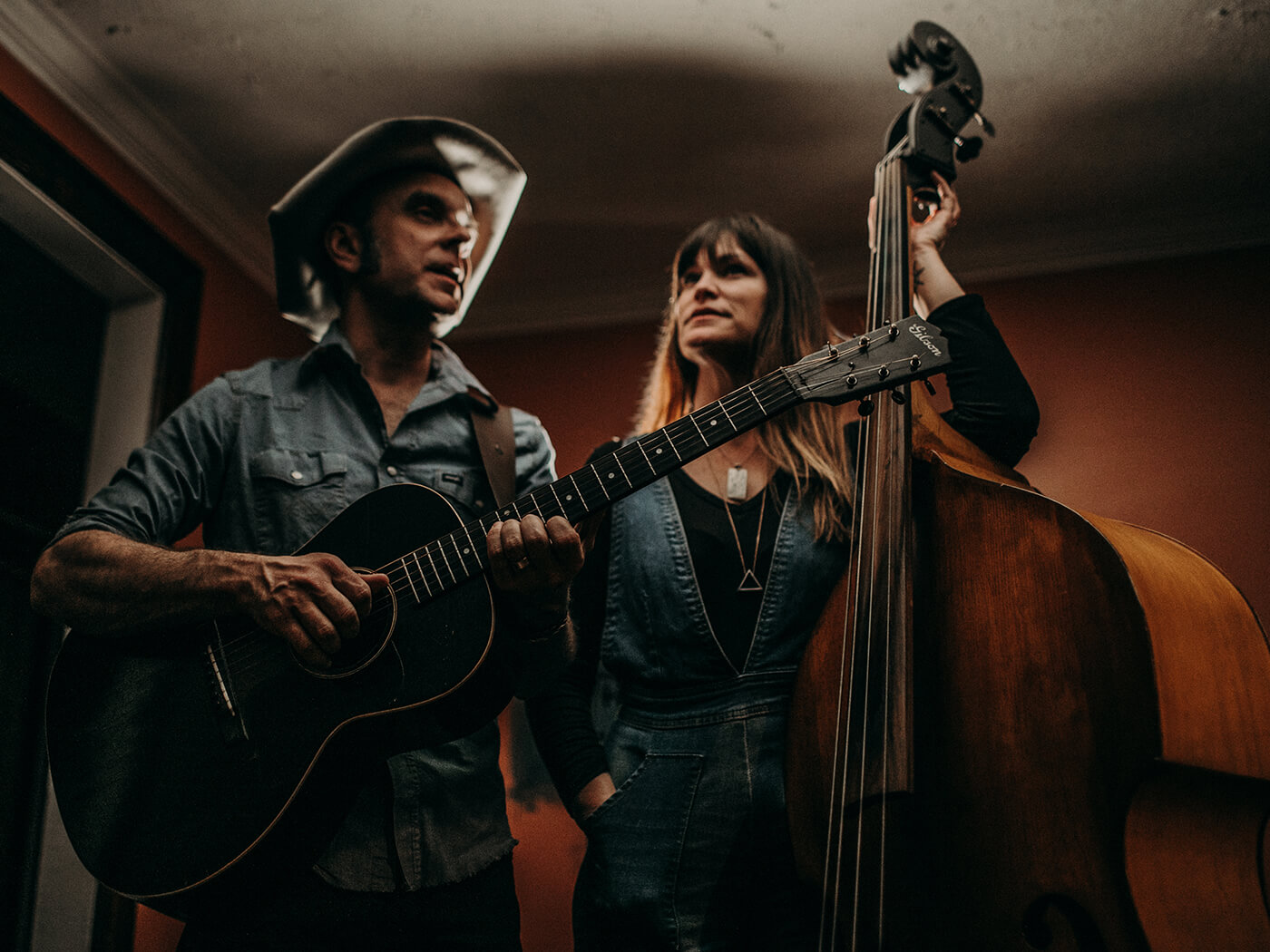How to make your music work for you: get your songs synced on TV, films and adverts
Synchronising your music to TV, films, ads or video games can significantly boost your profile, career and bank balance. Here’s how to optimise your chances of breaking into this market.

Wild Ponies. Image: Laura Schneider
There are defining moments in the development of gifted artists when events occur that take their careers to a whole new level. For Australian singer-songwriter Emily Barker, such a moment occurred in the summer of 2008 when she performed at a house concert in north London. Seated among the small audience was Martin Phipps, a composer working on the forthcoming BBC1 crime thriller series Wallander. When Barker performed Nostalgia, a haunting and emotive track by her trio the Red Clay Hero, Phipps knew he had stumbled across something really special.
Within days, he and Barker had re-recorded the track, which would become the central theme and closing credits for Wallander. When the series first aired in the UK on 20 November 2008, the impact on her career was immediate. “We happened to be doing a tour, which I’d booked us and it was ridiculous,” recalls Barker. “There were suddenly so many people at the gigs. I was like ‘What’s going on?’.”
The career-changing properties of a track that’s been placed in a film soundtrack, TV series, advertisement or videogame are viewed as something of a holy grail for artists. This form of music licensing – known as synchronisation or syncing – came to the fore back in the 80s, after the iconic 1985 Levi’s ‘Launderette’ ad led to an 800 per cent boost in the sale of Levi’s 501 jeans.
Three decades on, syncing has become a specialism in its own right. For songwriters and composers, syncing is an attractive option. It’s hugely competitive. But by following certain key steps, you can significantly improve your chances of getting your music synced.

Sourcing sync agencies
The first step for anyone syncing their music is to identify what style of music they make and who might want that music. The most obvious route to syncing is via the numerous sync agencies out there. Typing ‘sync music agency’ into Google will yield a whole list of names and a few clicks will reveal what areas they focus on and what kind of music they use. Most have a music submission option on their websites.
“You’re probably going to pay a fee if you don’t have much track record,” says Gee ‘Genia’ Davy, Chief Operation Officer for the Association of Independent Music (AIM). “But you’ve got room for negotiation once you start picking up some stuff.”
Always check that the company is reputable by noting if their website is up-to-date and what projects they have recently placed their music in. “If they’re not providing testimonials and track record then I’d think very carefully about whether you want to be paying them money,” says Davy.
Music supervisors
Sync agencies are the intermediaries between songwriters and the music supervisors, the individuals charged with the task of sourcing music for film, TV, advertisements and video games. In recent years, artists have increasingly aimed their pitches directly at the music supervisors. Research is paramount. IMDB and LinkedIn are rich sources of information on music supervisors. Scan the end credits of films or TV series whose soundtracks match your style and note down the music supervisor’s name. And make sure you only send music they might want.
“There’s no point hammering a music supervisor who only really works on big film scores for particular areas and genres, if you are a completely different genre,” says Davy. “It just won’t work. So be really strategic. Have a look at the kind of things they do, have a look at what they’re talking about on their blogs and feeds as to what they’re interested in. And only send them stuff if it’s going to be of interest to them.”

How to submit your music
When it comes to pitching tracks to music supervisors, organisation is key. “I have a whole spreadsheet of people that I keep in an address book for that specifically,” says Emily Barker, who advises artists without a major profile to submit just a few tracks at first. “Less is more initially,” she says, “So three or four tracks. You also need to have instrumental mixes ready to go in case someone says ‘I love that part of the song, can you give me an instrumental of that’. I usually send a private Soundcloud link and a Dropbox link so that people can download something immediately.”
It goes without saying that any music submitted to a music supervisor or sync agency must be well recorded, mixed and mastered. It’s also advisable to have stems available.
“It’s definitely a good idea to send stems,” says musician and composer Timo Baker. “Editors like to have as much control over the sound to be able to ‘duck’ certain musical elements if it clashes with dialogue or sound design.”
Baker landed his first major sync when his manager at the time introduced him to a musical supervisor in Los Angeles. Baker sent the supervisor the album Digital Scars by his dance-rock band T Minus 50 and the supervisor successfully placed three tracks with US police procedural drama series CSI: NY.
“The sync fees were very good – around $20k+ at the time – which put live gig fees in the shade,” he says. “The legals/negotiations were very straightforward as I owned the label and publishing. That was the beginning of a long running relationship with this music supervisor who represents my music for movie trailers in the US now.”
Baker’s subsequent syncs have included a trailer for the Netflix documentary series Making A Murderer. He advises those new to sync to experiment with texture and hooks. “Don’t pull your punches. ‘Vanilla’ ain’t gonna cut it. Be bold, be daring. Create something with personality whilst keeping your eye/ear on the sonic landscape too. It’s all a balancing act.”

The need to network
It’s well worth trying to meet music supervisors and the best way to do that is via networking. One of the best sync conferences, says Emily Barker, is AIM Sync. The last event, in February 2021 was virtual, but the benefits can still be profound.
“It’s an amazing event for networking, and networking is one of the best ways for creating those face-to-face contacts, who you can then follow up and email,” says Barker. “It’s also really important how you email somebody and what you include. Everything needs to be properly tagged, labelled and all the links need to work. Provide instrumentals and a short bio of who you are and something about the style of music.”
Stay true to yourself
Most conferences host sync sessions, at which tracks are pitched to music supervisors. Syncing sessions can yield real wins for artists. But syncing is a fickle market. Even when music supervisors love your music, it may lead absolutely nowhere. At a sync panel at the Americana Music Association UK Conference in 2019, Nashville-based duo Wild Ponies (Doug and Telisha Williams) wowed music supervisors with a recording of their sparse and achingly beautiful song Hearts And Bones. One music supervisor immediately announced that he wanted the song while two others were equally spellbound.
“It was a special moment for us,” recalls Doug Williams. “To hear your recorded music come out and create a moment like that in that space, in that room, was really special. But nothing ever happened with the track. It’s still out there and it’s still unsynced.”
Doug and Telisha are philosophical about the outcome. Telisha highlights the importance of maintaining volume – pitching a strong, consistent stream of new material. But she also advises against writing with the specific aim of being synced.
“We didn’t write Hearts And Bones to be synced,” she says. “We had a vision for that song, that had nothing to do with syncing. But we were true to the vision that we had for the song, and I think that is what came through in that moment.”
It’s a view reinforced by Timo Baker. “I didn’t write Digital Scars with the contrivance to land syncs. It was totally artistically driven – something I had to draw out of myself and release into the wider world. With this approach you create something with a unique, authentic voice that music supervisors tend to like. They want to hear the true artist coming through.”

Artist services
In recent years, digital aggregators such as CD Baby, Tunecore and Ditto, which artists use to get music onto online platforms, have added sync services. These companies, also known as artist services or label services, can be a good option for artists trying to break into the sync market, says Gee Davy.
“Yes you’re paying a fee upfront and yes you’re probably paying even more of a fee if it involves sync services,” she says, “but there are a lot of people with expertise at these label services who have come from label sync teams and from being music supervisors.”
Building relationships
Whichever sync approach you choose, there is one piece of advice that is paramount: never sign anything without getting it checked by a lawyer first. Davy also highlights the importance of seeking out expertise and recommendations. “Even if you’re a songwriter who’s an introvert, you don’t exist in a bubble. Sorry, you can’t. Get out there, get to events like AIM’s event. We run a lot of free things, we run a lot of free webinars, the Musicians’ Union runs events. Get out there, talk to people, ask them about their experience. That knowledge sharing is absolutely huge, particularly when it comes to very opaque, specialist areas such as sync.”
Building and maintaining good relationships is key, says Davy. So if you do find a music supervisor who is who is showing an interest in your music, then make every effort to maintain and nurture that relationship.
“If you’ve got a supervisor who is interested in your music, keep sending them stuff, with a back story,” she says. “Talk about your influences. Give them a rounded picture of your career, who you are and what your music stands for. Cause that stuff can really pay off. Music supervisors are extremely busy people, like everyone in music. So make their lives easy. Make it easy for them to choose you.”
